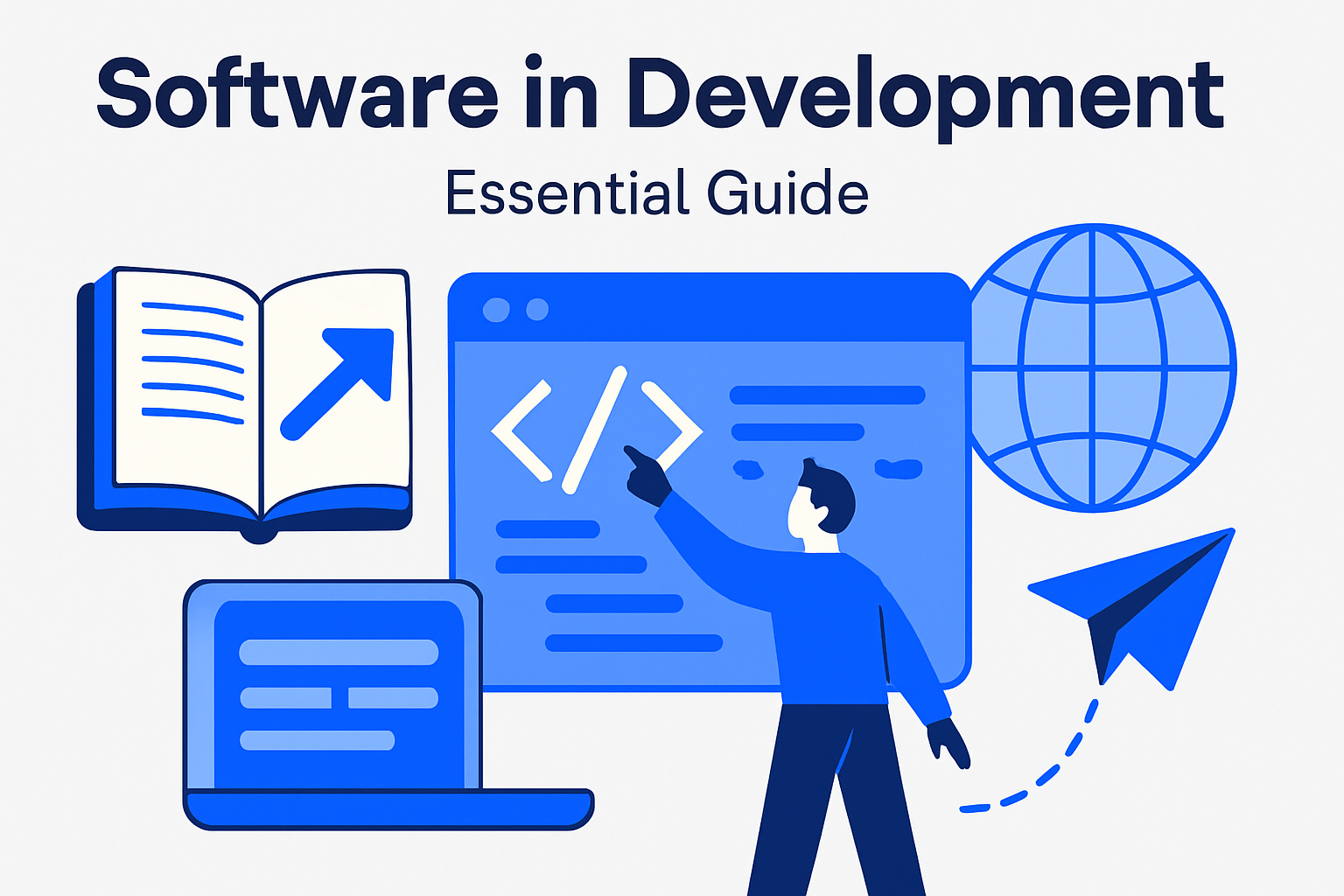The pace of change in software in development is reshaping how every industry operates. With 2025 on the horizon, businesses and developers face a wave of new possibilities and challenges.
This guide is your roadmap to the future, exploring emerging trends, essential tools, and proven methodologies. You’ll discover the types of software in development, the key roles involved, modern development models, and how AI, automation, and security are transforming the landscape. Ready to stay ahead? Dive in and empower your next project with future-ready insights.
Understanding Software in Development: Types and Trends for 2025
The concept of software in development is rapidly evolving as we approach 2025. With technology advancing at record speed, organizations and developers need to keep pace with new types, tools, and methodologies shaping the industry. Let’s break down what defines software in development today, highlight the most important trends, and examine the key statistics driving these changes.
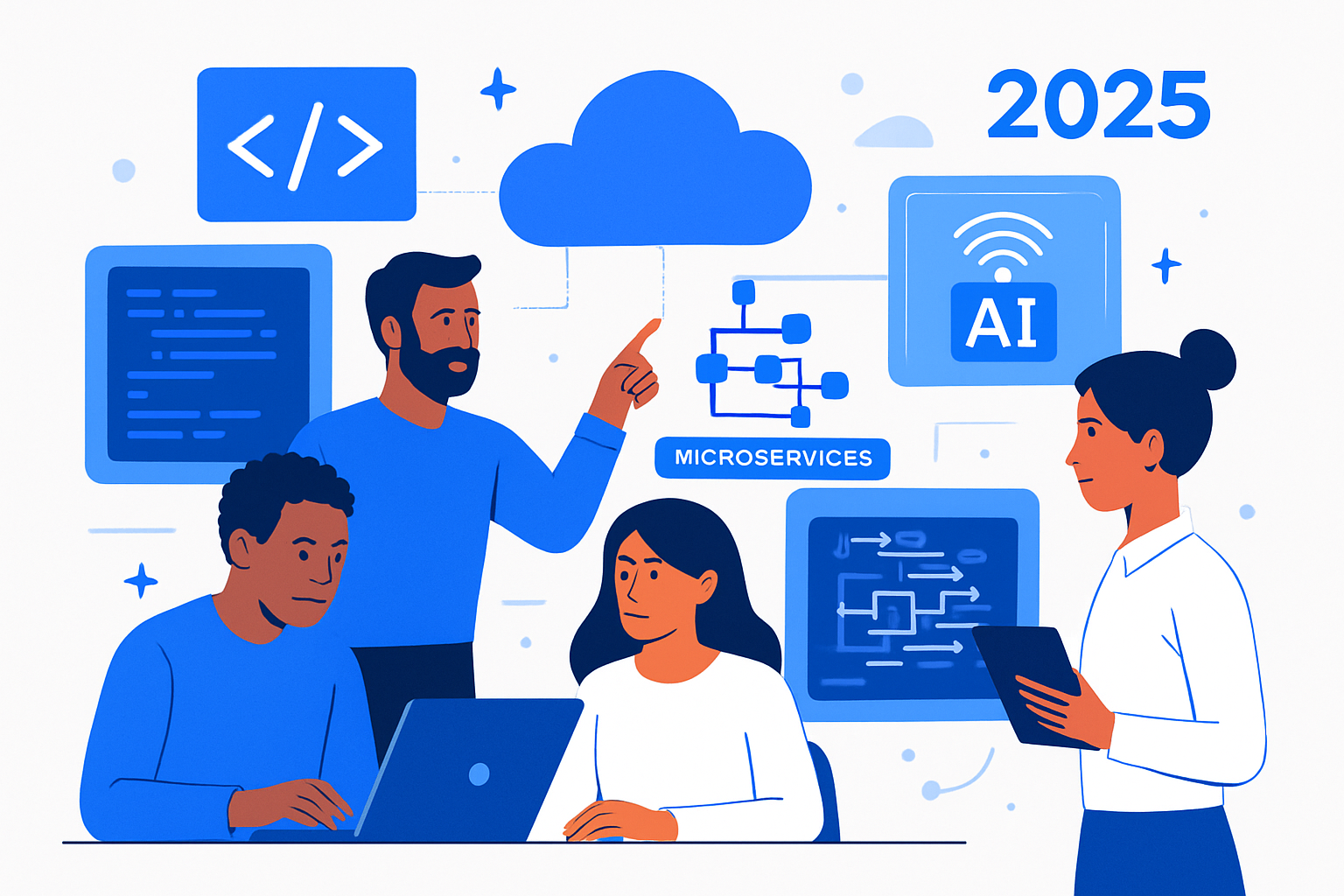
Defining Software in Development Today
Software in development now encompasses a wide spectrum of solutions tailored for an increasingly connected world. At its core, it refers to any program, system, or platform actively being designed, coded, or improved before full release.
There are several main categories:
- System software: Forms the backbone for hardware operations and includes operating systems and device drivers.
- Application software: Built for end-users, such as productivity tools, CRMs, and web apps.
- Programming software: Provides tools for developers, like compilers and code editors.
- Embedded software: Runs on dedicated hardware, powering IoT devices, smart appliances, and industrial machines.
Hybrid and cross-platform software is on the rise, enabling applications to run seamlessly across devices and operating systems. Companies often weigh the benefits of custom software—tailored to unique needs—against commercial off-the-shelf (COTS) solutions, which offer faster deployment and lower upfront costs.
Cloud-native and SaaS models now dominate, allowing teams to scale and update software in development with unprecedented agility. This shift is transforming how developers approach design, integration, and delivery.
Emerging Trends Shaping Software Development
Several transformative trends are defining software in development for 2025. Cloud computing is now foundational, with hybrid cloud and edge computing models enabling real-time data processing and improved scalability.
AI-powered tools are becoming mainstream, automating code generation, testing, and deployment. This not only accelerates development cycles but also reduces errors and manual effort. The expansion of the Internet of Things (IoT) and embedded software is connecting everything from factory equipment to home devices, creating new opportunities and challenges.
Developers are adopting API-first and microservices architectures to build modular, scalable systems. Low-code and no-code platforms are democratizing the creation of software in development, making it accessible even to those without traditional programming backgrounds. For a more detailed look at these trends and practical advice for 2025, check out the Essential software development guide 2025.
Leading tech companies like IBM emphasize the convergence of AI, hybrid cloud, and automation as core strategies. These shifts are not only changing how software in development is built but also who can build it and how quickly it can reach the market.
Key Statistics and Industry Data
Industry data highlights the scale and speed of these changes. More than 70% of enterprises are projected to adopt cloud-native software in development by 2025, according to recent IBM research.
AI-driven development tools are on track to reduce coding time by up to 50%, freeing up developers for more complex problem-solving. The adoption of no-code and low-code platforms is accelerating, with Gartner predicting that 65% of all application activity will involve these tools by 2025.
Here’s a quick snapshot:
| Trend | Statistic/Projection |
|---|---|
| Cloud-native software | 70%+ enterprise adoption |
| AI-driven tools | Up to 50% coding time reduction |
| No-/Low-code platforms | 65% of app activity by 2025 |
As these trends continue, software in development is set to become faster, more collaborative, and more inclusive—reshaping how businesses and developers approach innovation.
The Software Development Lifecycle: Step-by-Step for Modern Teams
Navigating the world of software in development requires a clear understanding of the modern Software Development Lifecycle (SDLC). This lifecycle is the backbone for building robust, secure, and high-quality solutions that can adapt to the fast-moving digital landscape.
The SDLC provides a structured approach, guiding teams from initial planning all the way to long-term maintenance. Whether you’re working on a simple app or a complex enterprise platform, following a proven SDLC model ensures every phase of software in development is aligned with business goals and user needs.
For a deeper dive into each phase, check out this Software development lifecycle explained guide.
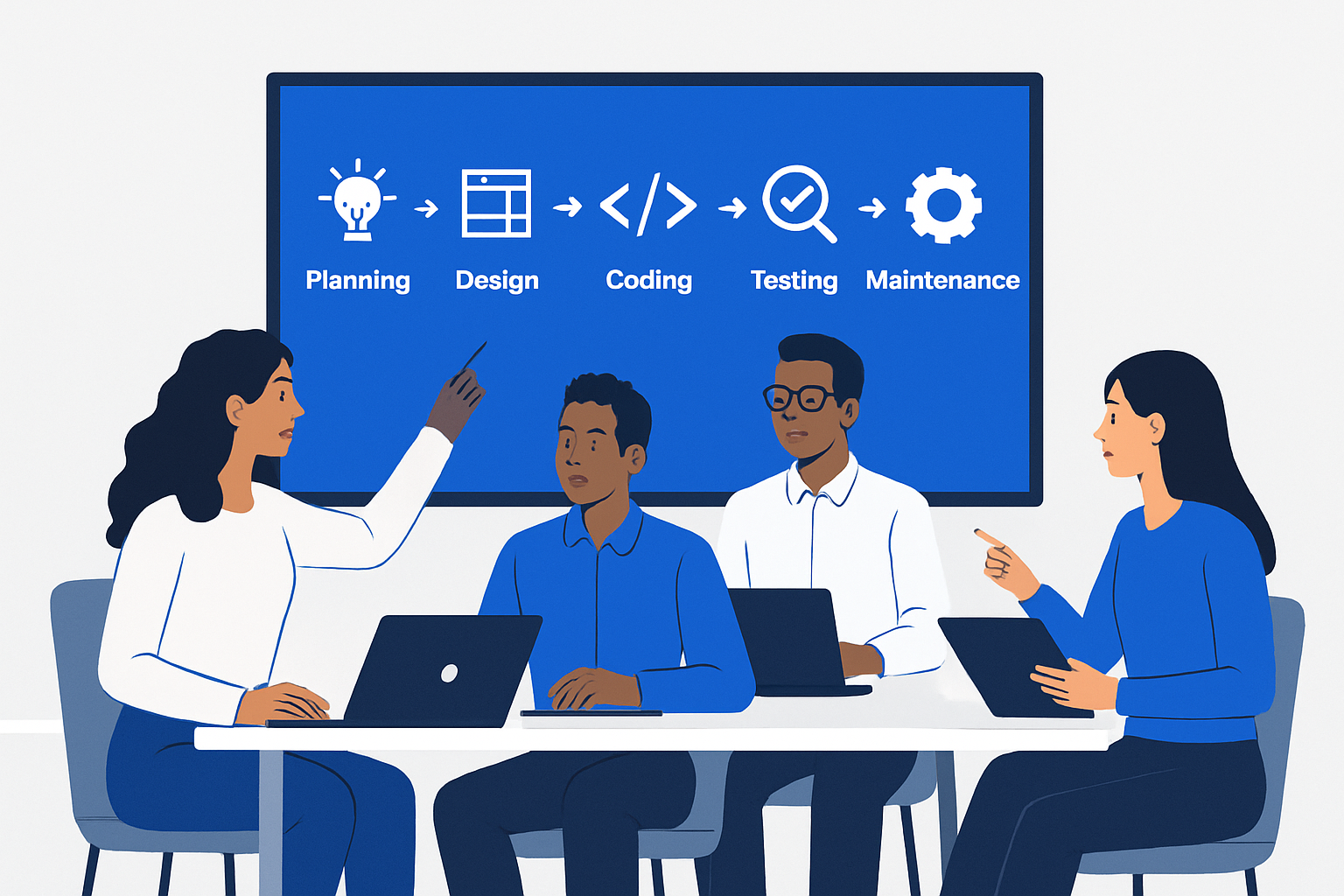
Overview of the Software Development Lifecycle (SDLC)
At its core, the SDLC is a roadmap for software in development, breaking down the journey into clear, actionable stages. These steps include:
- Planning
- Analysis
- Design
- Implementation
- Testing
- Deployment
- Maintenance
Each phase has a unique purpose, but together, they create a seamless workflow. Modern teams may choose sequential (step-by-step) or parallel (overlapping) approaches, depending on the project’s complexity. This flexibility allows for faster iterations or more thorough planning, giving teams the ability to adapt as requirements evolve.
By consistently applying the SDLC, organizations manage risk, improve software in development quality, and ensure compliance with industry standards.
Step 1: Planning and Requirements Management
The planning phase sets the stage for successful software in development. Teams gather detailed requirements by engaging stakeholders, reviewing business objectives, and analyzing user needs.
Key activities in this phase include:
- Conducting interviews and surveys
- Reviewing existing data and performance metrics
- Documenting compliance and security needs
Requirements management tools help streamline this process, making it easier to track changes and keep everyone aligned. By investing time upfront, teams prevent costly revisions later in the software in development lifecycle.
Step 2: Design and Prototyping
Once requirements are clear, the focus shifts to the design and prototyping phase. Here, teams translate ideas into technical blueprints, such as wireframes, mockups, and architectural diagrams.
During this phase, developers evaluate existing APIs or consider building new integrations to enhance functionality. Prototyping tools and modeling languages like UML or SysML allow for rapid visualization and validation of concepts.
Early prototypes help stakeholders visualize the end product, reducing misunderstandings and ensuring the software in development meets expectations.
Step 3: Coding and Implementation
With the design in place, coding and implementation bring the vision to life. Developers choose between manual coding methods and AI-assisted tools for faster, error-free results.
Integrating DevOps practices—such as continuous integration and continuous delivery (CI/CD)—enables teams to automate repetitive tasks and accelerate delivery. Automation tools can handle tasks like code compilation, testing, and deployment, freeing up developers to focus on innovation.
The coding phase is where software in development truly takes shape, combining creativity with technical precision.
Step 4: Testing and Quality Assurance
Testing is vital for delivering reliable software in development. Teams use both automated and manual testing methods to uncover bugs, security flaws, and performance issues.
Common testing types include:
- Security testing
- Performance benchmarking
- Usability reviews
Continuous testing throughout development ensures that issues are caught early, reducing the risk of defects reaching production. By prioritizing quality assurance, teams build trust with users and safeguard the reputation of their software in development.
Step 5: Deployment and Optimization
Deployment is the moment when software in development goes live. Teams may use strategies like beta releases or canary deployments to minimize risk and gather real-world feedback.
Infrastructure as Code (IaC) tools help automate environment setup and resource provisioning, making deployments faster and more consistent. Ongoing monitoring and analytics allow teams to optimize performance, identify issues, and apply patches as needed.
Effective deployment practices ensure that software in development delivers value from day one and remains resilient over time.
Step 6: Documentation and Maintenance
Comprehensive documentation is essential for supporting software in development after launch. It provides a reference for troubleshooting, onboarding new team members, and planning future updates.
Continuous maintenance cycles—powered by DevOps automation—keep systems secure and up-to-date. Teams schedule regular updates, monitor for vulnerabilities, and respond quickly to user feedback.
Strong documentation and a proactive maintenance strategy extend the life of software in development and maximize its long-term impact.
Modern Software Development Models: Choosing the Right Approach
The landscape of software in development is changing rapidly, and choosing the right development model is critical for project success in 2025. Today’s teams have a wide variety of approaches, each designed to address different business needs, project complexities, and team dynamics.
Overview of Popular Development Models
Software in development now leverages several established models, each with its own strengths. The Waterfall model is a linear, step-by-step process best suited for projects with clear requirements and minimal changes. The V-Shaped model builds on Waterfall, emphasizing verification and validation at every stage.
Iterative models allow for repeated cycles of planning, development, and refinement. This approach is ideal when requirements evolve over time. Agile, one of the most widely adopted models, focuses on delivering small, incremental updates through sprints, enabling teams to respond quickly to feedback.
DevOps integrates development and operations, breaking silos and automating processes for faster, more reliable delivery. As software in development becomes more complex, hybrid approaches that combine elements of these models are also gaining ground.
Comparing Models: Pros, Cons, and Use Cases
Selecting the right approach for software in development depends on project goals and constraints. Waterfall is predictable but inflexible, making it suitable for well-defined projects with fixed scopes. Agile shines in environments where adaptability and stakeholder collaboration are paramount.
DevOps enables continuous integration and delivery, reducing time-to-market and improving quality. Iterative models are great for projects with shifting requirements, allowing teams to learn and adapt. Hybrid models blend the strengths of multiple frameworks, creating customized solutions for complex software in development scenarios.
Here's a quick comparison:
| Model | Best For | Pros | Cons |
|---|---|---|---|
| Waterfall | Simple, defined projects | Predictable, clear | Inflexible, slow change |
| Agile | Evolving requirements | Adaptive, collaborative | Less predictability |
| DevOps | Fast delivery, automation | Speed, quality | Requires culture shift |
| Iterative | Learning, adaptation | Flexibility, feedback | Can extend timelines |
Trends in Model Adoption for 2025
By 2025, Agile and DevOps are expected to dominate software in development methodologies. Organizations are embracing these models for their ability to accelerate delivery and foster collaboration. The move toward hybrid models is also growing, as teams seek to tailor their approach to unique business needs.
Enterprises are blending Agile’s flexibility with DevOps’ automation to create workflows that maximize speed and quality. This trend is especially notable among companies managing complex software in development lifecycles, where adaptability is key. As a result, teams are consistently reviewing and refining their processes to stay competitive.
No-Code and AI-Driven Development: Big House Technologies as a Case Study
A major trend reshaping software in development is the rise of no-code and AI-driven platforms. Companies like Big House Technologies are pioneering this space, using tools like Bubble and Lovable to help both startups and enterprises build solutions faster and more affordably.
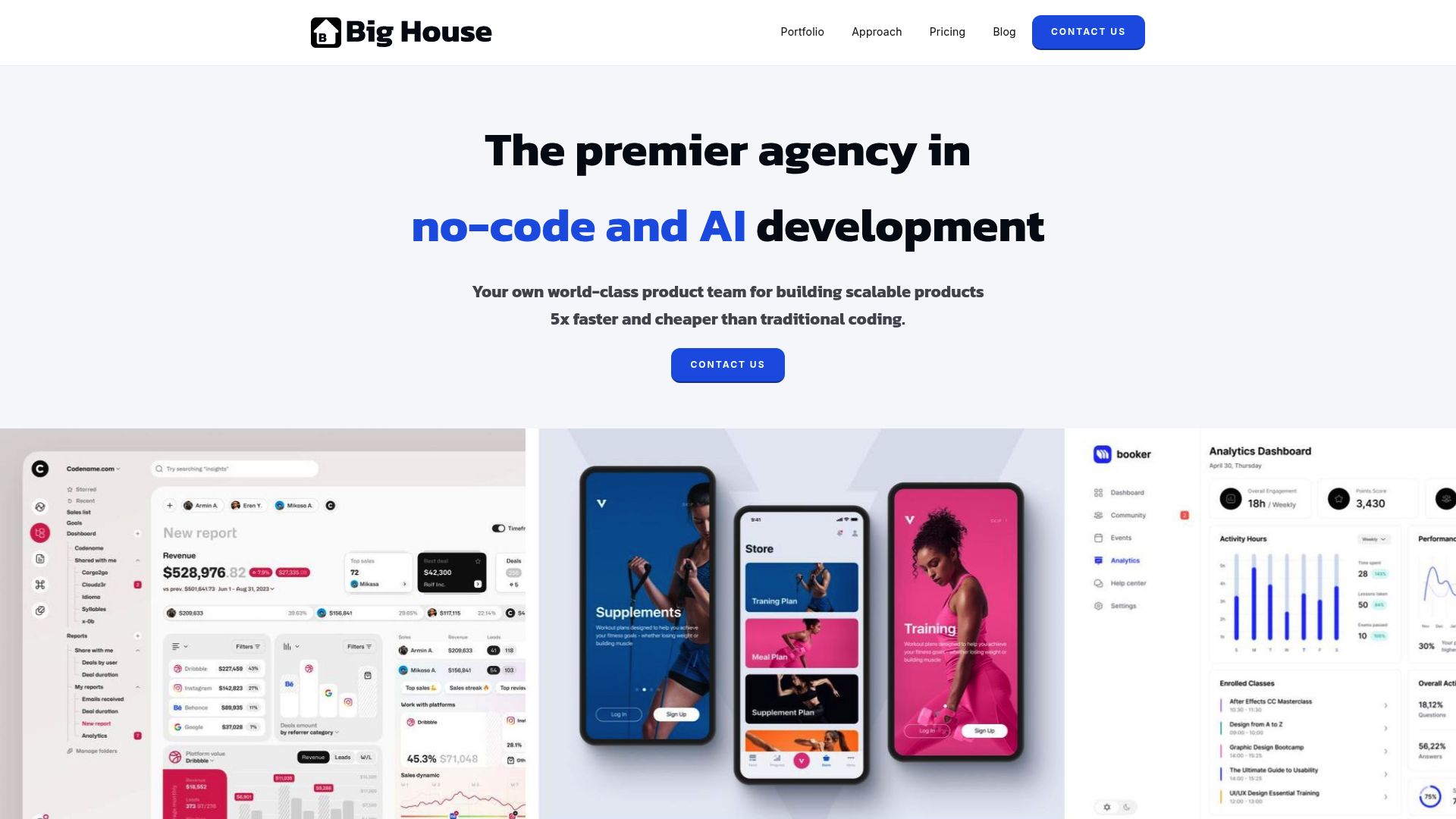
No-code platforms empower non-technical users to participate directly in software in development, dramatically reducing delivery times and costs. According to No-code for internal tool development, enterprises now leverage these tools for rapid prototyping and internal applications. This democratization of software in development breaks down barriers, enabling business leaders to turn ideas into products at unprecedented speed.
Case studies in finance, agriculture, and energy show how this approach can deliver scalable, enterprise-grade software in development without traditional bottlenecks. As AI and no-code converge, the future of software in development looks increasingly accessible and innovative.
The Evolving Role of AI, Automation, and DevOps in 2025
As we look at software in development for 2025, three forces stand out: AI, automation, and DevOps. These trends are reshaping how teams build, test, and launch digital solutions. Let’s break down how each is transforming the landscape and what it means for developers and organizations.
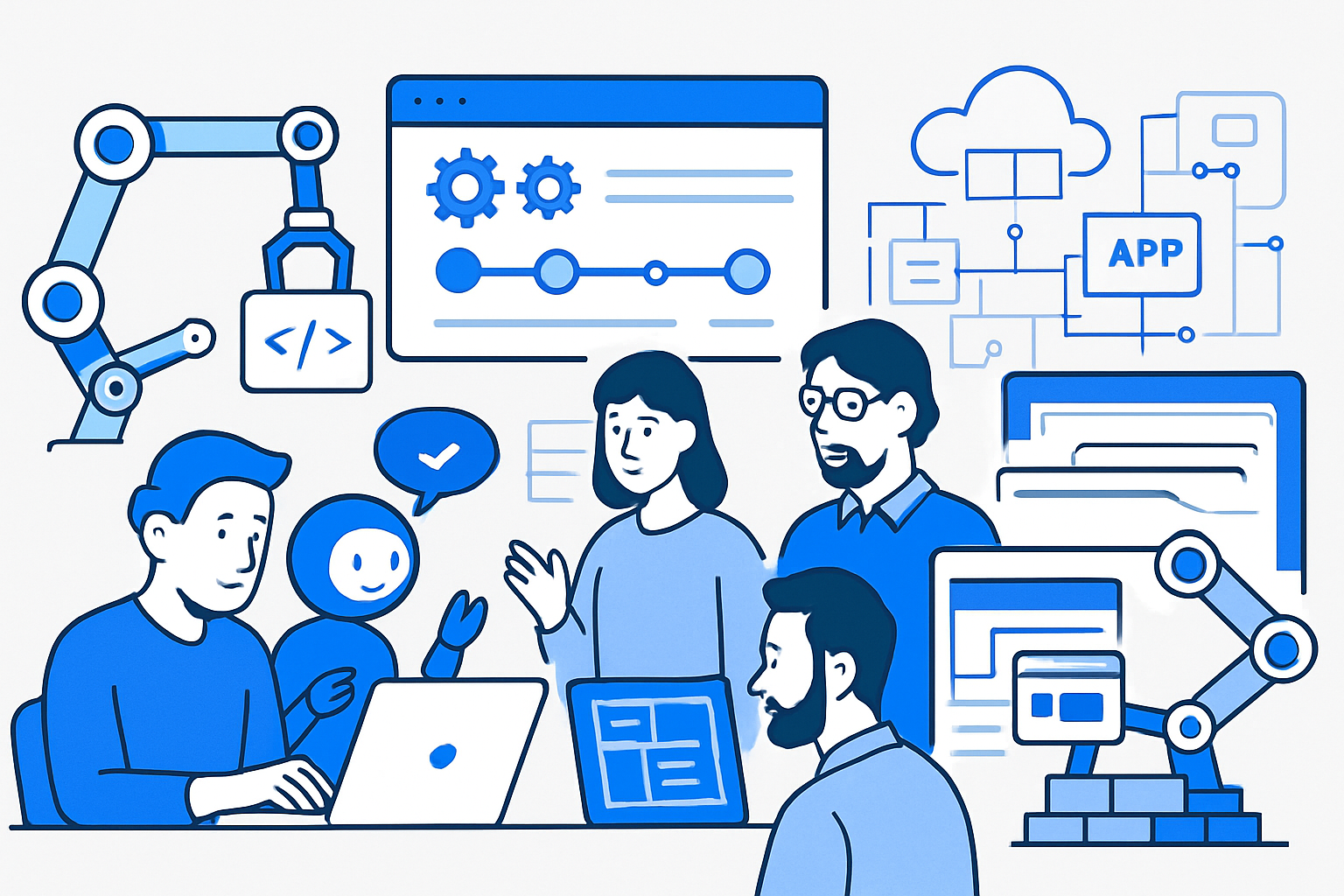
AI in the Software Development Process
Artificial intelligence is now woven into every stage of software in development. AI-powered tools help generate code, detect bugs, and optimize performance faster than ever. Generative AI models can even build prototypes or suggest design improvements based on real-time feedback.
For example, IBM integrates AI into the software development lifecycle to accelerate releases and improve product quality. Teams now rely on smart assistants to catch errors early, automate code reviews, and streamline testing. This shift enables developers to focus on solving complex problems rather than repetitive tasks, making software in development smarter and more efficient.
Automation and Continuous Delivery
Automation is the engine behind modern software in development. By automating repetitive tasks like testing, deployment, and monitoring, teams gain speed and consistency. Tools for Infrastructure as Code (IaC) let developers manage environments programmatically, reducing manual errors.
Continuous Integration and Continuous Deployment (CI/CD) pipelines are now standard, ensuring that new features move smoothly from code to production. For a deeper look at how AI is boosting these automation strategies, check out AI tools for software code. The result is faster delivery cycles, fewer bugs, and more resilient applications—a game-changer for software in development.
DevOps Maturity and Collaboration
DevOps has become a cornerstone for software in development, breaking down barriers between development and operations. Mature DevOps practices emphasize collaboration, shared goals, and continuous feedback. This approach boosts transparency and allows teams to adapt quickly to changes or failures.
By integrating monitoring, security, and automation from the start, organizations build more reliable software in development. Real-world examples show that these practices reduce downtime and improve user satisfaction. Teams that embrace DevOps culture are better equipped to handle complex projects and deliver value consistently.
Impact on Developer Roles and Skills
As AI and automation reshape software in development, developer roles are evolving. There’s a growing need for multidisciplinary teams where members have “T-shaped” skills—deep expertise in one area and broad knowledge in others. Developers must now understand AI, cloud infrastructure, and automation tools alongside traditional coding.
Upskilling is essential. Organizations invest in training to help their teams master new platforms and workflows. This adaptability ensures that software in development remains innovative and competitive, even as technology rapidly changes.
Industry Data and Insights
Industry research highlights the rapid adoption of AI and automation in software in development. By 2025, 80% of organizations are expected to use these tools in their workflows. DevOps adoption is also accelerating, with companies seeing deployment cycles that are twice as fast compared to traditional methods.
Here’s a quick snapshot:
| Trend | Adoption Rate (2025) |
|---|---|
| AI/Automation Tools | 80% |
| Cloud-Native Models | 70%+ |
| DevOps Practices | 2x Faster Deploys |
Staying ahead in software in development means embracing these trends, investing in the right skills, and building a culture of continuous improvement.
Security, Compliance, and Quality in Software Development for 2025
The landscape of software in development is facing unprecedented security and compliance demands. As threats become more sophisticated, businesses must adopt a proactive mindset to protect their applications, data, and users. With 2025 on the horizon, integrating robust security and quality measures is no longer optional—it's mission critical.
The Growing Importance of Security and Compliance
Security and compliance are now core pillars in software in development. The rise of cyberattacks and complex regulations means every stage of the SDLC must prioritize these areas. Integrating security early—known as DevSecOps—helps teams identify risks before they escalate.
AI is also playing a major role, not only in defense but in the threat landscape itself. For example, AI's Impact on Software Supply Chain Security reveals how attackers are leveraging AI to exploit vulnerabilities, pushing developers to stay one step ahead. Relying on threat intelligence, like insights from the IBM X-Force 2025 Threat Intelligence Index, can help teams anticipate emerging risks and adapt quickly.
Ensuring Quality and Reliability
A commitment to quality and reliability is essential for any software in development. Automated testing frameworks are now the norm, helping teams catch bugs, security gaps, and performance issues early. Continuous integration and deployment pipelines ensure that every release is stable and secure.
Patch management is another cornerstone of reliability. Timely updates address vulnerabilities and keep systems resilient. Continuous monitoring allows teams to detect anomalies and respond before small issues become major incidents. The goal is simple—deliver dependable software in development that users and stakeholders can trust.
Regulatory Trends and Industry Standards
Regulatory compliance is shaping the future of software in development. Laws like GDPR and HIPAA set strict standards for data privacy and security. As AI-powered software becomes mainstream, new ethical guidelines and transparency requirements are emerging.
Industries such as finance and healthcare face additional sector-specific regulations. Meeting these standards isn’t just about avoiding penalties—it's about building trust with users. Staying updated on evolving rules helps organizations future-proof their software in development and maintain a competitive edge.
Best Practices for Secure Development
Implementing best practices ensures that security and quality are woven into every layer of software in development. Secure coding guidelines, regular code reviews, and automated vulnerability scans are all critical. Modern development teams are turning to AI-driven solutions, such as AI-Powered Vulnerability Remediation, to quickly identify and fix weaknesses.
Beta testing and gathering user feedback drive continuous improvement. Iterative cycles allow for rapid response to new threats and requirements. Ultimately, a culture of vigilance and adaptability defines successful software in development in 2025.
Future Innovations and What’s Next in Software Development
The horizon for software in development is expanding rapidly as we move into 2025. Organizations and developers are navigating a wave of transformative technologies and evolving mindsets. Let’s explore what’s on the cutting edge and how you can prepare for the future.
Upcoming Technologies and Paradigms
The next era of software in development will be shaped by quantum computing breakthroughs, the rise of autonomous AI agents, and immersive technologies like augmented and virtual reality. These innovations promise to unlock new possibilities in processing power and user experience.
Quantum computing, still in its infancy, is poised to revolutionize problem-solving for complex simulations and cryptography. Meanwhile, AI agents are automating tasks that once required manual intervention, from testing to customer support. Immersive tech is blurring the lines between digital and physical worlds.
Additionally, the convergence of IoT, 5G, and Edge Computing Integration is creating platforms for real-time data processing and smarter applications. These advances mean software in development must adapt to leverage distributed resources, ultra-low latency, and seamless connectivity.
The Role of Open Source and Community Collaboration
Open source is now a driving force in software in development, fostering rapid innovation and knowledge sharing. Developers worldwide contribute to frameworks, libraries, and tools, accelerating progress and reducing duplication of effort.
Community-driven projects are becoming the backbone of many enterprise solutions. By collaborating on open platforms, teams gain access to cutting-edge features, frequent updates, and robust security. This collaborative spirit is essential for tackling the challenges and complexities of future software in development.
Participating in open source not only builds technical skills but also cultivates a culture of transparency and trust within the industry.
Shifting Developer Mindsets and Organizational Culture
The landscape of software in development is no longer just about technical skills. Continuous learning, adaptability, and creative problem-solving are now essential traits for every team member.
Organizations are prioritizing resilient, cross-functional teams that thrive on experimentation and fast feedback. Emphasizing psychological safety and knowledge sharing helps foster innovation at every stage.
As automation and AI become more integrated, developers are expected to wear multiple hats and embrace a growth mindset. This shift is reshaping how software in development teams operate and succeed.
Predictions for 2025 and Beyond
Looking ahead, software in development is set to become the backbone of digital transformation across every industry. The convergence of AI, automation, and no-code platforms will define the new standard for building scalable, responsive solutions.
We can expect ongoing evolution as teams respond to new regulatory, security, and ethical challenges. The most successful organizations will be those that prioritize flexibility and invest in future-ready talent.
In 2025 and beyond, software in development will not just keep pace with change—it will drive it, unlocking new opportunities for businesses and society alike.
We’ve covered a lot of ground on where software development is heading for 2025—from game-changing AI tools to the rise of no-code platforms that make building powerful solutions faster and more accessible than ever. If you’re inspired to put these insights into action and want to turn your next big idea into a real product, why wait months to see results? Let’s make it happen together—Launch Your MVP in Weeks, Not Months. You’ll be amazed at how quickly you can bring your vision to life!




About Big House
Big House is committed to 1) developing robust internal tools for enterprises, and 2) crafting minimum viable products (MVPs) that help startups and entrepreneurs bring their visions to life.
If you'd like to explore how we can build technology for you, get in touch. We'd be excited to discuss what you have in mind.
Other Articles
Learn how to add a custom domain to your Bubble app with step-by-step guides, SEO tips, and expert advice from Big House, a top no code agency specializing in Bubble.io development.
Unlock business growth in 2025 with this technological software guide Explore trends selection strategies integration tips and future proof your success
Discover how enterprise level application development drives digital transformation in 2025. Explore key strategies, trends, and best practices for success.

